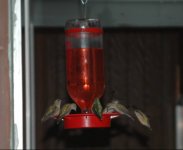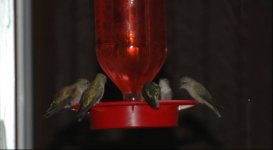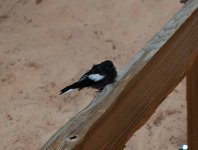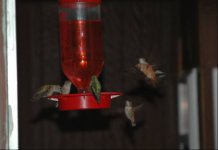buckskin hawk
Oklahoma Birder
My sister lives in Leadville Colorado. The elevation is 10,200 and at her home it is around 8,000. She has a hummingbird feeder and last week I was able to visit her. We watched many broadtailed and some rufous enjoy the feeder. She had what appears to be a third type -- I wanted to call it a black chinned but the throat was red like a ruby thraoted. It didn't have any white tips on the tail - just a totally black tail.
Could these be ruby throated that far west and this high? Is it a juvenile?
Could these be ruby throated that far west and this high? Is it a juvenile?







